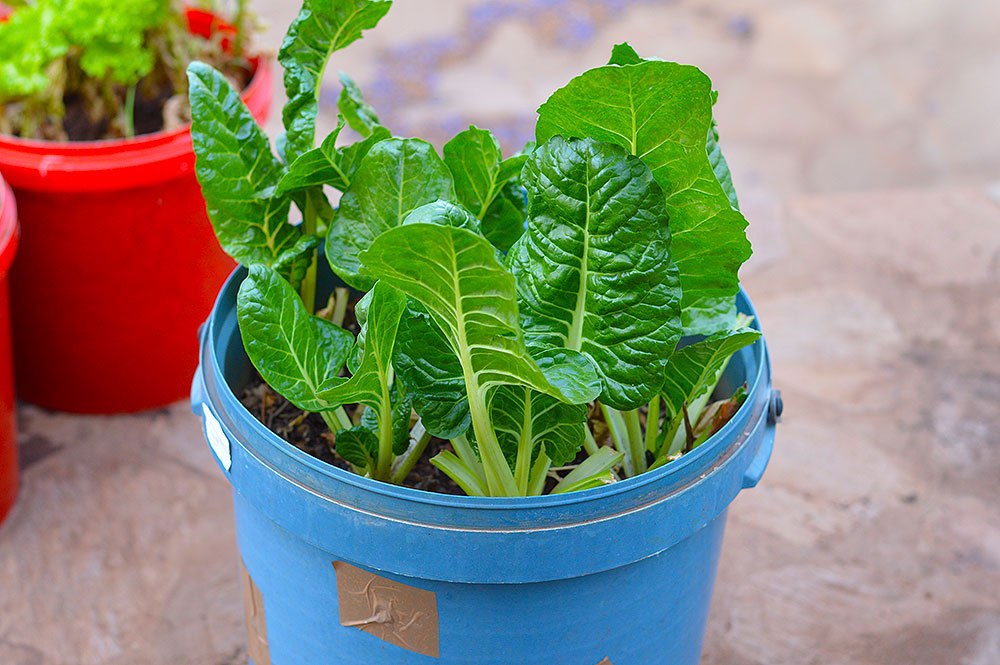How to Grow Spinach in Containers for Beginners

Growing spinach in containers is like embarking on a miniature gardening adventure. Imagine transforming your balcony, patio, or even a sunny windowsill into a lush, green oasis brimming with fresh, homegrown spinach. Whether you're a seasoned gardener or a beginner, container gardening offers a simple and rewarding way to grow your own produce. Let's dive into the world of container spinach and discover how you can cultivate this nutritious green with ease.
Why Grow Spinach in Containers?
Container gardening is perfect for urban spinach enthusiasts and beginner gardeners alike. It offers flexibility, ease of maintenance, and the joy of watching your plants thrive in a controlled environment. Plus, you can move your containers around to find the perfect spot for optimal growth.
Getting Started: Choosing the Right Container
The first step in growing spinach in containers is selecting the right vessel. Opt for a container that is at least 6-8 inches deep and wide. This ensures ample space for root development and healthy growth. Materials like plastic, terracotta, or even recycled containers can work well. Just make sure your container has adequate drainage holes to prevent waterlogging.
Selecting the Best Spinach Varieties for Containers
Not all spinach varieties are created equal when it comes to container gardening. Some of the best options for container spinach include:
- Space: A compact variety that grows well in small spaces.
- Bloomsdale: Known for its savoyed leaves and excellent flavor.
- Baby's Leaf Hybrid: A fast-growing variety that is perfect for quick harvests.
Choose varieties that are known for their compact growth and disease resistance to ensure a successful harvest.
Preparing Your Container for Planting
Once you have your container and spinach seeds, it's time to prepare for planting. Fill your container with a well-draining potting mix. Avoid using garden soil, as it can be too heavy and compacted for container planting. Mix in some compost or slow-release fertilizer to give your spinach a nutrient boost.
Planting Your Spinach Seeds
Planting spinach seeds is straightforward. Sow the seeds about 1/2 inch deep and 2-3 inches apart. Cover them lightly with soil and water gently. Keep the soil consistently moist but not waterlogged. Spinach seeds typically germinate within 7-14 days.
Caring for Your Container Spinach
Watering
Spinach thrives in consistently moist soil. Water your container spinach regularly, ensuring the soil remains damp but not soggy. A good rule of thumb is to water when the top inch of soil feels dry.
Light Requirements
Spinach loves cool temperatures and partial shade. Place your container in a spot that receives 4-6 hours of sunlight daily. Avoid direct afternoon sun, as it can cause the spinach to bolt (go to seed) prematurely.
Fertilizing
Feed your spinach plants with a balanced, water-soluble fertilizer every 2-3 weeks. This will provide the necessary nutrients for healthy growth and abundant leaves.
Pest and Disease Management
Keep an eye out for common pests like aphids and spider mites. Regularly inspect your plants and treat any infestations promptly with organic or chemical pesticides. Proper spacing and good air circulation can help prevent diseases like downy mildew.
Harvesting Your Spinach
The best part of growing spinach in containers is the harvest. You can start picking leaves when they are about 2-3 inches long. Harvest the outer leaves first, allowing the inner leaves to continue growing. This method ensures a continuous supply of fresh spinach.
Troubleshooting Common Issues
Even with the best care, issues can arise. Here are some common problems and their solutions:
- Yellowing Leaves: This could be a sign of overwatering or nutrient deficiency. Adjust your watering schedule and consider adding a balanced fertilizer.
- Bolting: If your spinach starts to flower, it's a sign that the plant is bolting. This usually happens in hot weather. Move your container to a cooler, shadier spot.
- Slow Growth: Slow growth can be due to insufficient light or nutrients. Ensure your spinach is getting enough sunlight and consider adding more fertilizer.
Conclusion
Growing spinach in containers is a rewarding experience that brings fresh, homegrown greens right to your doorstep. With the right container, soil, and care, you can enjoy a bountiful harvest of nutritious spinach. Whether you're a beginner gardener or an urban dweller with limited space, container gardening offers a simple and satisfying way to cultivate your own produce. So, why not give it a try? Your taste buds and your green thumb will thank you!
FAQs
What is the best time to plant spinach in containers?
- Spinach prefers cool temperatures, so the best time to plant is in early spring or late summer/early fall.
Can I grow spinach indoors?
- Yes, spinach can be grown indoors with the right conditions. Place your container near a sunny window and ensure consistent moisture.
How often should I water my container spinach?
- Water your spinach when the top inch of soil feels dry. This usually means watering every 2-3 days, depending on the weather and container size.
What can I do to prevent spinach from bolting?
- Keep your spinach in a cool, shady spot and avoid excessive heat. Bolting is a natural response to hot temperatures.
Can I reuse the soil from my spinach container for another crop?
- Yes, you can reuse the soil, but it's a good idea to refresh it with some new potting mix and compost to replenish nutrients.


Happy gardening!
0 Response to "How to Grow Spinach in Containers for Beginners"
Post a Comment